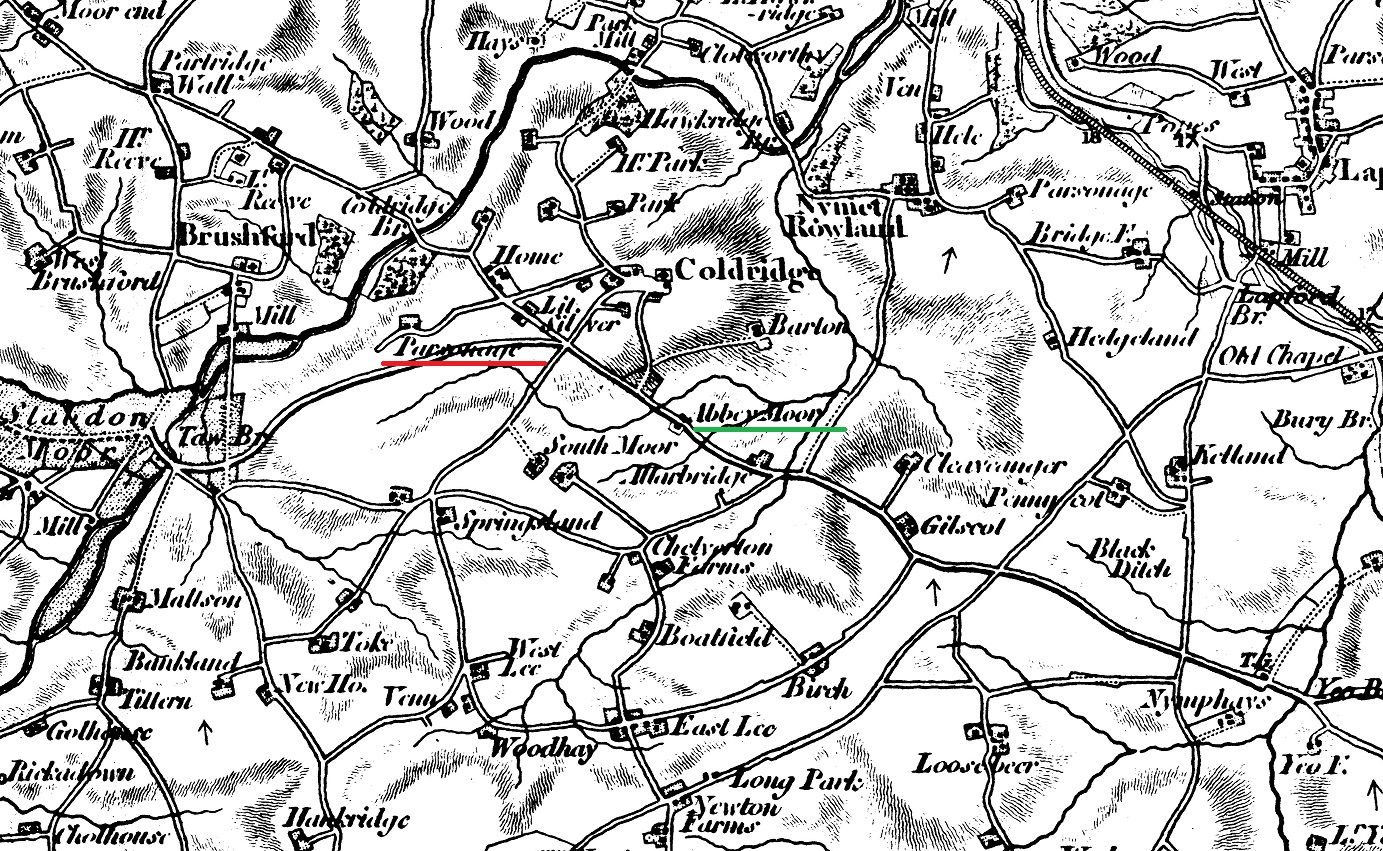Sacrilege at Coldridge
In October 1867, the parish church of St Matthew in Coldridge was broken into and the silver communion plate stolen.
Joseph Mashford, parish clerk at Coldridge, went to the church on the 24th October, 1867. He found some of the glass in one the windows removed enough to enable a man to get through. He went in the church, and on looking at the chest he found that the padlock fastening had been broken, the chest opened, and a little box which used to be inside the chest and contained the plate was gone. A stone jar and a brass candlestick were also missing.

The silver communion plate was valued at £12.
A reward was offerered for conviction of the thief.
There was no sign of the missing items for two years.
Richard Stapleton was born in Nymet Rowland in 1814; he first worked there as a farm labourer. In the 1850s after his mother (a pauper) died he moved to Hobby Moor near Coldridge and had a business as a marine store (i.e. scrap) dealer. In 1868 he had been sentenced to a week in prison with hard labour for stealing turnips to the value of 4d from Mr Reed of Coldridge Barton.

1866 Ordnance Survey Map of Coldridge showing Hobby Moor ("Abbey Moor") where Stapleton lived, and the site of the Parsonage
On 4 November 1869 Stapleton sold some broken bits of silver to James Burrows, a licensed hawker from Barnstaple at the public house in Morchard Road. Burrows was arrested after selling them on to Thomas Stone, an Exeter silver smith who recognised that the pieces of metal were probably bits of church plate, and informed the police. The vicar of Coldridge, Revd William Sadler, confirmed they were bits of the missing communion plate. (Sadler was the last vicar to live in the vicarage near Westacott Farm, South of the village.)
A few days later Stapleton was arrested at the Ring of Bells in Coldridge by John Sergeant, the police superintendent based in Bow. Stapleton told him that there was more silver hidden in a hedge in Coldridge and showed him where to find it. The oak box had been dumped at the time of the robbery in a furze (gorse) brake there. He made a statement that he had bought the silver off John Cockram, a local thatcher, at the Stags Head in Coldridge, in return for two quarts of cider. Cockram was then arrested but denied having anything to do with it.
On Monday 15 Nov 1869 , Richard Stapleton 52, pedlar, and Cockram 56, thatcher, both of Coldridge, were charged before Dr. Christian Budd and the Rev. Robert Hole, at North Tawton, with robbing Coldridge church, on October 23rd, 1867.
The two were later charged at the Exeter assizes with breaking and entering the church of the parish of Coldridge, and stealing one silver chalice, one silver paten, one silver plate, one glass decanter with silver mounted stopper, and other articles.
The jury found Cockram not guilty, and Stapleton guilty of receiving stolen goods.
When called on to say why sentence should not be passed on him, the prisoner said he was in very ill-health and was unable to do any hard work. He had been a marine store dealer twenty years, and he hoped the Court would be merciful to him. Nevertheless he was sentenced to five years imprisonment which he served at Woking Invalid Convict Prison in Surrey.
After his release, he returned to Hobby Moor and his business as a marine store dealer. He died there, a bachelor, in 1895.
